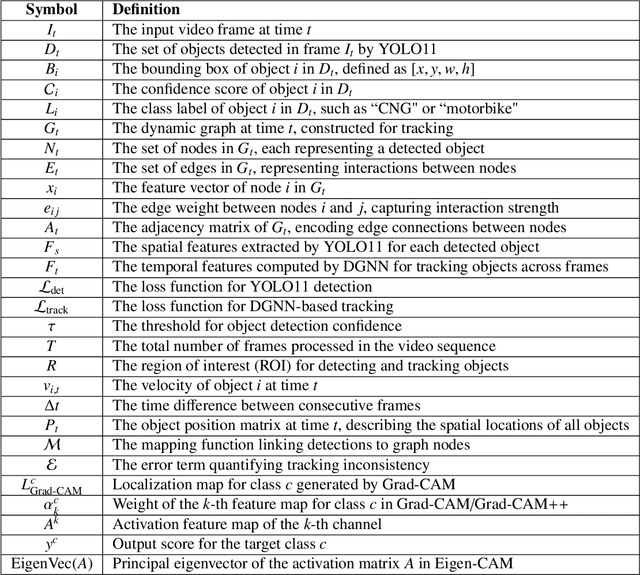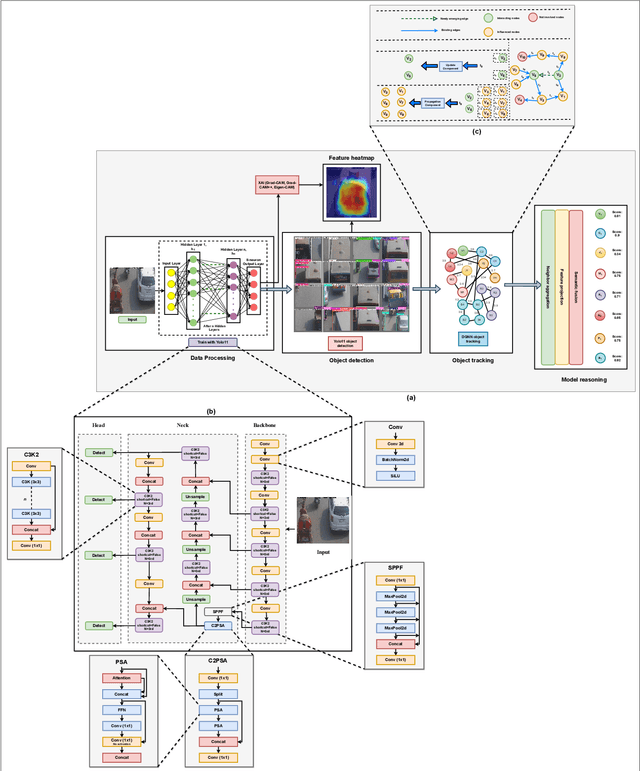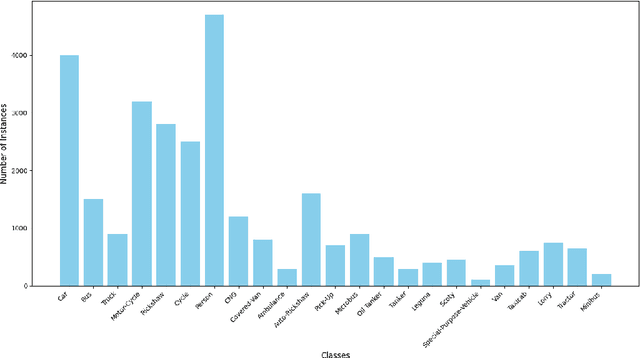M. F. Mridha
AdeptHEQ-FL: Adaptive Homomorphic Encryption for Federated Learning of Hybrid Classical-Quantum Models with Dynamic Layer Sparing
Jul 09, 2025Abstract:Federated Learning (FL) faces inherent challenges in balancing model performance, privacy preservation, and communication efficiency, especially in non-IID decentralized environments. Recent approaches either sacrifice formal privacy guarantees, incur high overheads, or overlook quantum-enhanced expressivity. We introduce AdeptHEQ-FL, a unified hybrid classical-quantum FL framework that integrates (i) a hybrid CNN-PQC architecture for expressive decentralized learning, (ii) an adaptive accuracy-weighted aggregation scheme leveraging differentially private validation accuracies, (iii) selective homomorphic encryption (HE) for secure aggregation of sensitive model layers, and (iv) dynamic layer-wise adaptive freezing to minimize communication overhead while preserving quantum adaptability. We establish formal privacy guarantees, provide convergence analysis, and conduct extensive experiments on the CIFAR-10, SVHN, and Fashion-MNIST datasets. AdeptHEQ-FL achieves a $\approx 25.43\%$ and $\approx 14.17\%$ accuracy improvement over Standard-FedQNN and FHE-FedQNN, respectively, on the CIFAR-10 dataset. Additionally, it reduces communication overhead by freezing less important layers, demonstrating the efficiency and practicality of our privacy-preserving, resource-aware design for FL.
* Accepted in 1st International Workshop on ICCV'25 BISCUIT (Biomedical Image and Signal Computing for Unbiasedness, Interpretability, and Trustworthiness)
Vision Transformers for End-to-End Quark-Gluon Jet Classification from Calorimeter Images
Jun 17, 2025Abstract:Distinguishing between quark- and gluon-initiated jets is a critical and challenging task in high-energy physics, pivotal for improving new physics searches and precision measurements at the Large Hadron Collider. While deep learning, particularly Convolutional Neural Networks (CNNs), has advanced jet tagging using image-based representations, the potential of Vision Transformer (ViT) architectures, renowned for modeling global contextual information, remains largely underexplored for direct calorimeter image analysis, especially under realistic detector and pileup conditions. This paper presents a systematic evaluation of ViTs and ViT-CNN hybrid models for quark-gluon jet classification using simulated 2012 CMS Open Data. We construct multi-channel jet-view images from detector-level energy deposits (ECAL, HCAL) and reconstructed tracks, enabling an end-to-end learning approach. Our comprehensive benchmarking demonstrates that ViT-based models, notably ViT+MaxViT and ViT+ConvNeXt hybrids, consistently outperform established CNN baselines in F1-score, ROC-AUC, and accuracy, highlighting the advantage of capturing long-range spatial correlations within jet substructure. This work establishes the first systematic framework and robust performance baselines for applying ViT architectures to calorimeter image-based jet classification using public collider data, alongside a structured dataset suitable for further deep learning research in this domain.
Co-AttenDWG: Co-Attentive Dimension-Wise Gating and Expert Fusion for Multi-Modal Offensive Content Detection
May 25, 2025Abstract:Multi-modal learning has become a critical research area because integrating text and image data can significantly improve performance in tasks such as classification, retrieval, and scene understanding. However, despite progress with pre-trained models, current approaches are limited by inadequate cross-modal interactions and static fusion strategies that do not fully exploit the complementary nature of different modalities. To address these shortcomings, we introduce a novel multi-modal Co-AttenDWG architecture that leverages dual-path encoding, co-attention with dimension-wise gating, and advanced expert fusion. Our approach begins by projecting text and image features into a common embedding space, where a dedicated co-attention mechanism enables simultaneous, fine-grained interactions between modalities. This mechanism is further enhanced by a dimension-wise gating network that adaptively regulates the feature contributions at the channel level, ensuring that only the most relevant information is emphasized. In parallel, dual-path encoders refine the representations by processing cross-modal information separately before an additional cross-attention layer further aligns modalities. The refined features are then aggregated via an expert fusion module that combines learned gating and self-attention to produce a robust, unified representation. We validate our approach on the MIMIC and SemEval Memotion 1.0, where experimental results demonstrate significant improvements in cross-modal alignment and state-of-the-art performance, underscoring the potential of our model for a wide range of multi-modal applications.
MobilePlantViT: A Mobile-friendly Hybrid ViT for Generalized Plant Disease Image Classification
Mar 20, 2025Abstract:Plant diseases significantly threaten global food security by reducing crop yields and undermining agricultural sustainability. AI-driven automated classification has emerged as a promising solution, with deep learning models demonstrating impressive performance in plant disease identification. However, deploying these models on mobile and edge devices remains challenging due to high computational demands and resource constraints, highlighting the need for lightweight, accurate solutions for accessible smart agriculture systems. To address this, we propose MobilePlantViT, a novel hybrid Vision Transformer (ViT) architecture designed for generalized plant disease classification, which optimizes resource efficiency while maintaining high performance. Extensive experiments across diverse plant disease datasets of varying scales show our model's effectiveness and strong generalizability, achieving test accuracies ranging from 80% to over 99%. Notably, with only 0.69 million parameters, our architecture outperforms the smallest versions of MobileViTv1 and MobileViTv2, despite their higher parameter counts. These results underscore the potential of our approach for real-world, AI-powered automated plant disease classification in sustainable and resource-efficient smart agriculture systems. All codes will be available in the GitHub repository: https://github.com/moshiurtonmoy/MobilePlantViT
Multimodal Programming in Computer Science with Interactive Assistance Powered by Large Language Model
Mar 09, 2025Abstract:LLM chatbot interfaces allow students to get instant, interactive assistance with homework, but doing so carelessly may not advance educational objectives. In this study, an interactive homework help system based on DeepSeek R1 is developed and first implemented for students enrolled in a large computer science beginning programming course. In addition to an assist button in a well-known code editor, our assistant also has a feedback option in our command-line automatic evaluator. It wraps student work in a personalized prompt that advances our educational objectives without offering answers straight away. We have discovered that our assistant can recognize students' conceptual difficulties and provide ideas, plans, and template code in pedagogically appropriate ways. However, among other mistakes, it occasionally incorrectly labels the correct student code as incorrect or encourages students to use correct-but-lesson-inappropriate approaches, which can lead to long and frustrating journeys for the students. After discussing many development and deployment issues, we provide our conclusions and future actions.
Soybean Disease Detection via Interpretable Hybrid CNN-GNN: Integrating MobileNetV2 and GraphSAGE with Cross-Modal Attention
Mar 03, 2025Abstract:Soybean leaf disease detection is critical for agricultural productivity but faces challenges due to visually similar symptoms and limited interpretability in conventional methods. While Convolutional Neural Networks (CNNs) excel in spatial feature extraction, they often neglect inter-image relational dependencies, leading to misclassifications. This paper proposes an interpretable hybrid Sequential CNN-Graph Neural Network (GNN) framework that synergizes MobileNetV2 for localized feature extraction and GraphSAGE for relational modeling. The framework constructs a graph where nodes represent leaf images, with edges defined by cosine similarity-based adjacency matrices and adaptive neighborhood sampling. This design captures fine-grained lesion features and global symptom patterns, addressing inter-class similarity challenges. Cross-modal interpretability is achieved via Grad-CAM and Eigen-CAM visualizations, generating heatmaps to highlight disease-influential regions. Evaluated on a dataset of ten soybean leaf diseases, the model achieves $97.16\%$ accuracy, surpassing standalone CNNs ($\le95.04\%$) and traditional machine learning models ($\le77.05\%$). Ablation studies validate the sequential architecture's superiority over parallel or single-model configurations. With only 2.3 million parameters, the lightweight MobileNetV2-GraphSAGE combination ensures computational efficiency, enabling real-time deployment in resource-constrained environments. The proposed approach bridges the gap between accurate classification and practical applicability, offering a robust, interpretable tool for agricultural diagnostics while advancing CNN-GNN integration in plant pathology research.
CAGN-GAT Fusion: A Hybrid Contrastive Attentive Graph Neural Network for Network Intrusion Detection
Mar 02, 2025Abstract:Cybersecurity threats are growing, making network intrusion detection essential. Traditional machine learning models remain effective in resource-limited environments due to their efficiency, requiring fewer parameters and less computational time. However, handling short and highly imbalanced datasets remains challenging. In this study, we propose the fusion of a Contrastive Attentive Graph Network and Graph Attention Network (CAGN-GAT Fusion) and benchmark it against 15 other models, including both Graph Neural Networks (GNNs) and traditional ML models. Our evaluation is conducted on four benchmark datasets (KDD-CUP-1999, NSL-KDD, UNSW-NB15, and CICIDS2017) using a short and proportionally imbalanced dataset with a constant size of 5000 samples to ensure fairness in comparison. Results show that CAGN-GAT Fusion demonstrates stable and competitive accuracy, recall, and F1-score, even though it does not achieve the highest performance in every dataset. Our analysis also highlights the impact of adaptive graph construction techniques, including small changes in connections (edge perturbation) and selective hiding of features (feature masking), improving detection performance. The findings confirm that GNNs, particularly CAGN-GAT Fusion, are robust and computationally efficient, making them well-suited for resource-constrained environments. Future work will explore GraphSAGE layers and multiview graph construction techniques to further enhance adaptability and detection accuracy.
From Images to Insights: Transforming Brain Cancer Diagnosis with Explainable AI
Jan 09, 2025Abstract:Brain cancer represents a major challenge in medical diagnostics, requisite precise and timely detection for effective treatment. Diagnosis initially relies on the proficiency of radiologists, which can cause difficulties and threats when the expertise is sparse. Despite the use of imaging resources, brain cancer remains often difficult, time-consuming, and vulnerable to intraclass variability. This study conveys the Bangladesh Brain Cancer MRI Dataset, containing 6,056 MRI images organized into three categories: Brain Tumor, Brain Glioma, and Brain Menin. The dataset was collected from several hospitals in Bangladesh, providing a diverse and realistic sample for research. We implemented advanced deep learning models, and DenseNet169 achieved exceptional results, with accuracy, precision, recall, and F1-Score all reaching 0.9983. In addition, Explainable AI (XAI) methods including GradCAM, GradCAM++, ScoreCAM, and LayerCAM were employed to provide visual representations of the decision-making processes of the models. In the context of brain cancer, these techniques highlight DenseNet169's potential to enhance diagnostic accuracy while simultaneously offering transparency, facilitating early diagnosis and better patient outcomes.
IMVB7t: A Multi-Modal Model for Food Preferences based on Artificially Produced Traits
Dec 21, 2024Abstract:Human behavior and interactions are profoundly influenced by visual stimuli present in their surroundings. This influence extends to various aspects of life, notably food consumption and selection. In our study, we employed various models to extract different attributes from the environmental images. Specifically, we identify five key attributes and employ an ensemble model IMVB7 based on five distinct models for some of their detection resulted 0.85 mark. In addition, we conducted surveys to discern patterns in food preferences in response to visual stimuli. Leveraging the insights gleaned from these surveys, we formulate recommendations using decision tree for dishes based on the amalgamation of identified attributes resulted IMVB7t 0.96 mark. This study serves as a foundational step, paving the way for further exploration of this interdisciplinary domain.
DGNN-YOLO: Interpretable Dynamic Graph Neural Networks with YOLO11 for Small Object Detection and Tracking in Traffic Surveillance
Dec 11, 2024



Abstract:Accurate detection and tracking of small objects, such as pedestrians, cyclists, and motorbikes, is critical for traffic surveillance systems, which are crucial for improving road safety and decision-making in intelligent transportation systems. However, traditional methods face challenges such as occlusion, low resolution, and dynamic traffic conditions, necessitating innovative approaches to address these limitations. This paper introduces DGNN-YOLO, a novel framework integrating dynamic graph neural networks (DGNN) with YOLO11 to enhance small-object detection and tracking in traffic surveillance systems. The framework leverages YOLO11's advanced spatial feature extraction capabilities for precise object detection and incorporates a DGNN to model spatial-temporal relationships for robust real-time tracking dynamically. By constructing and updating graph structures, DGNN-YOLO effectively represents objects as nodes and their interactions as edges, thereby ensuring adaptive and accurate tracking in complex and dynamic environments. Additionally, Grad-CAM, Grad-CAM++, and Eigen-CAM visualization techniques were applied to DGNN-YOLO to provide model-agnostic interpretability and deeper insights into the model's decision-making process, enhancing its transparency and trustworthiness. Extensive experiments demonstrated that DGNN-YOLO consistently outperformed state-of-the-art methods in detecting and tracking small objects under diverse traffic conditions, achieving the highest precision (0.8382), recall (0.6875), and mAP@0.5:0.95 (0.6476), showing its robustness and scalability, particularly in challenging scenarios involving small and occluded objects. This study provides a scalable, real-time traffic surveillance and analysis solution, significantly contributing to intelligent transportation systems.
 Add to Chrome
Add to Chrome Add to Firefox
Add to Firefox Add to Edge
Add to Edge